Master of plaster: Elisabeth Frink remembered at Hauser & Wirth Somerset
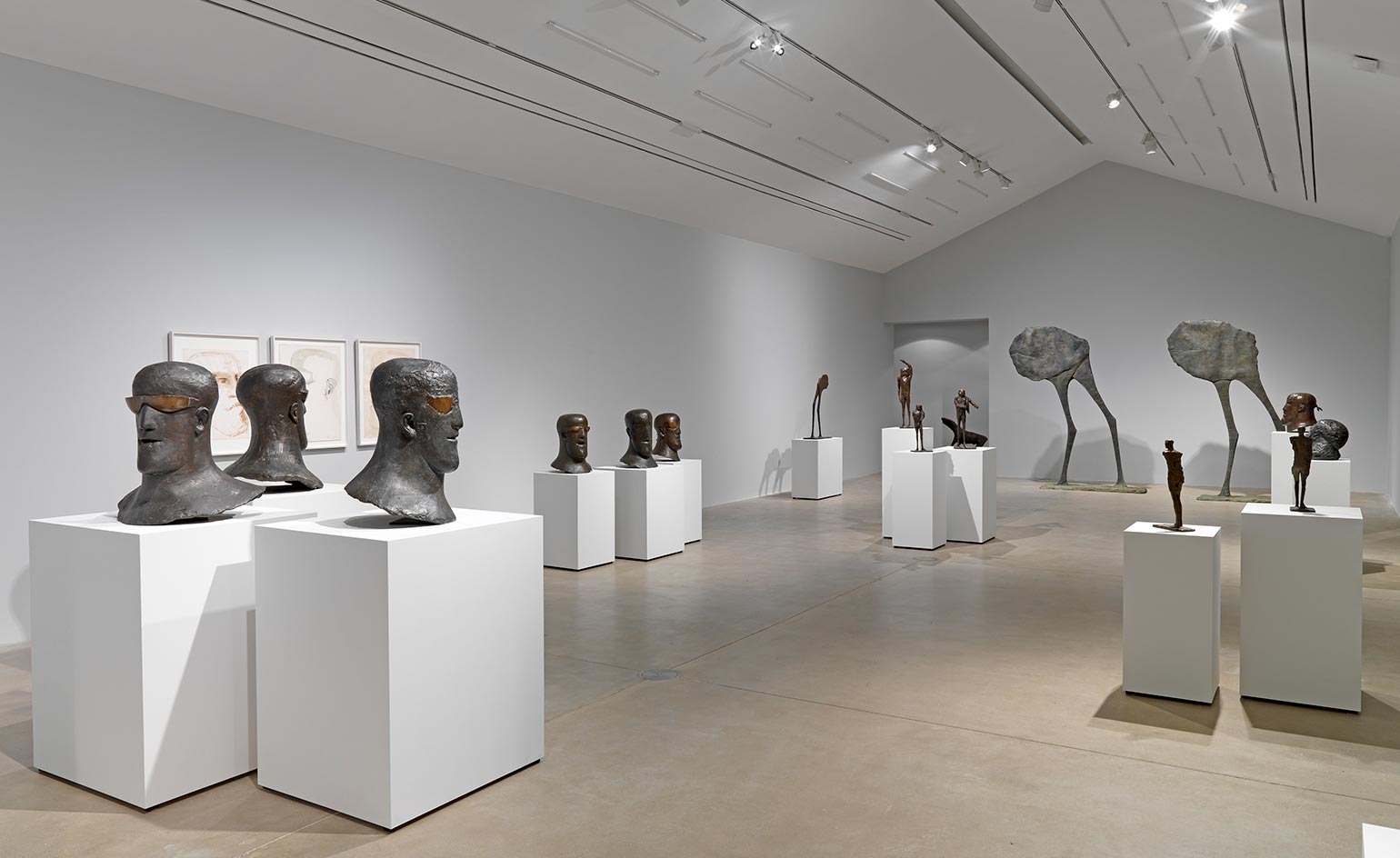
A 13-year-old Elisabeth Frink was walking along the coast in Exmouth with school friends, when machine-gunned German warplanes descended, dropping bombs above her head. Torn so violently from childhood, the traumatic encounter left an ineradicable impression on Frink.
The memory of personal and collective trauma – the Second World War, the hydrogen bomb – would preoccupy Frink in her work as a sculptor over 40 years, in more than 400 sculptures she produced (she only had an assistant once, to complete her last and largest work, The Welcoming Christ at Liverpool Cathedral). She is perhaps, Britain’s most successful underrated artist, but now, her work is beginning to receive the recognition and study it deserves.
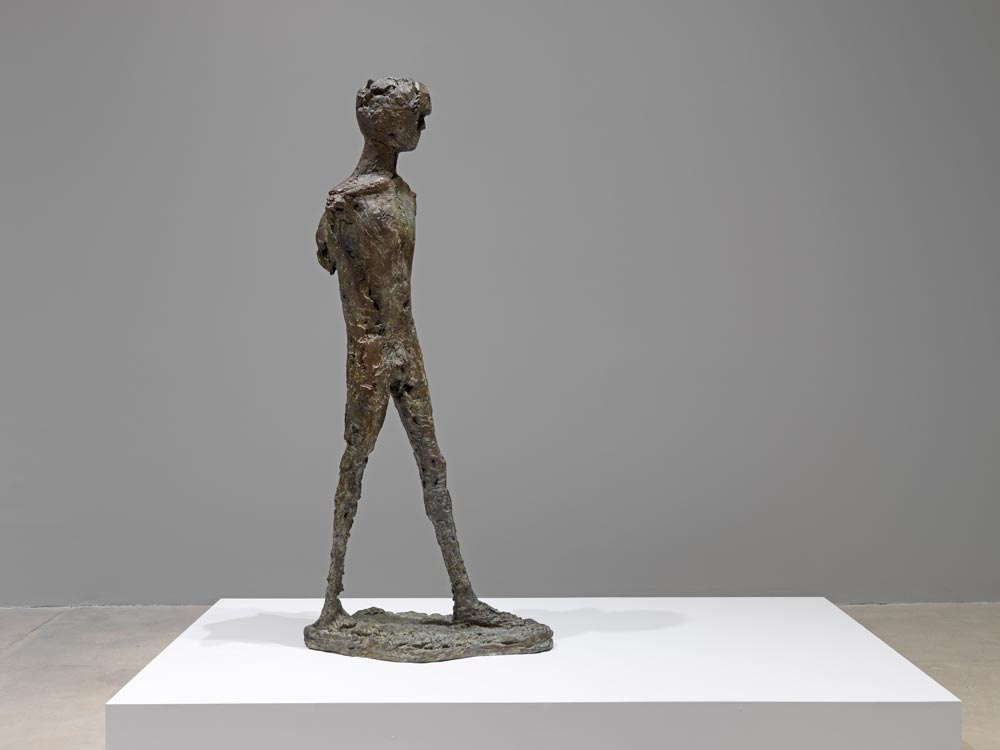
Installation view of 'Elisabeth Frink: Transformation'.
'Perhaps it’s difficult to talk about the things humans are capable of, but if you mix man with beast, you can start to address some of those thoughts in a more compelling way,' says Annette Ratuszniak, curator of the Frink Estate, who worked closely with Hauser & Wirth Somerset's Senior Director, Alice Workman to put together the first major exhibition of the artist’s work in the UK, at Hauser & Wirth Somerset, close to Frink’s Dorset home and studio where she worked up until her death in 1993.
Focused on the early period of her work – sculptures and sketches from the 1950s and 1960s – the exhibition touches on the cathartic nature of the process of sculpting, and brings together some of Frink’s motifs: birds and bird-like figures, eyes and heads. Imposing, dark and heavy looking, it’s hard to imagine that these works were produced at the time the world went pop.
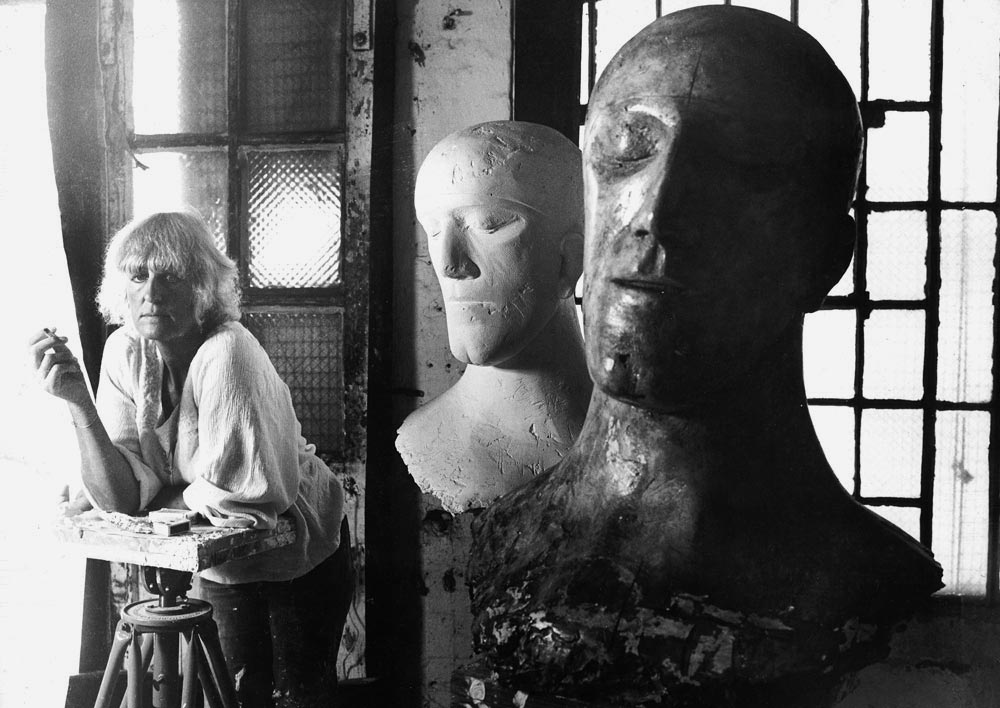
Elisabeth Frink and 'Tribute Heads' in her Southwark studio, 1975
Yet Frink wasn’t really an 'age of anxiety' artist. Her son, Lin Jammet, who also collaborated on the exhibition, remembers his mother as a 'natural socialite', a joyful person who frequented Finch’s, a popular drinking hole for artists on the Fulham Road in the 1960s, 'a proper pub with sawdust on the floor, the sweet aroma of ale and tobacco bellowing out every time someone entered or came out.'
Through sculpture, Frink imagined all forms – human and animal – as malleable, bringing about transformations through plaster. In reshaping the world in her studio, she also saw the vulnerability of the human form – relevant in our tumultuous times, just as much as it was in Frink’s own.

Frink created 400 sculptures in her 40 year career

Man meets beast in her visceral works

Frink imagined all forms as malleable, bringing about transformations through plaster

The exhibition also features early sketches from the 1950s and 1960s
INFORMATION
’Transformation’ is on view until 7 May. For more information, visit the Hauser & Wirth website
ADDRESS
Hauser & Wirth Somerset
Durslade Farm
Dropping Lane
Bruton
Somerset BA10 0NL
Receive our daily digest of inspiration, escapism and design stories from around the world direct to your inbox.
Charlotte Jansen is a journalist and the author of two books on photography, Girl on Girl (2017) and Photography Now (2021). She is commissioning editor at Elephant magazine and has written on contemporary art and culture for The Guardian, the Financial Times, ELLE, the British Journal of Photography, Frieze and Artsy. Jansen is also presenter of Dior Talks podcast series, The Female Gaze.
-
 Sound and vision are combined in this Dyson x Porter bag and wireless headphone combo
Sound and vision are combined in this Dyson x Porter bag and wireless headphone comboDyson’s first limited edition collaboration with cult Japanese bag brand Porter brings together the OnTrac headphones with a stylish shoulder bag
-
 RIBA reveals more three shortlisted structures for 2025’s House of the Year award
RIBA reveals more three shortlisted structures for 2025’s House of the Year awardThree more houses join the shortlist for the UK’s highest domestic architectural accolade. We explore the Triangle House, Amento and Jankes Barn
-
 JLR is a mainstay of modern motoring luxury, but do car brands need creative figureheads?
JLR is a mainstay of modern motoring luxury, but do car brands need creative figureheads?With Gerry McGovern departing from Jaguar Land Rover, what next for the Indian-owned, British-built house of brands?
-
 Artists imbue the domestic with an unsettling unfamiliarity at Hauser & Wirth
Artists imbue the domestic with an unsettling unfamiliarity at Hauser & WirthThree artists – Koak, Ding Shilun and Cece Philips – bring an uncanny subversion to the domestic environment in Hauser & Wirth’s London exhibition
-
 Rolf Sachs’ largest exhibition to date, ‘Be-rühren’, is a playful study of touch
Rolf Sachs’ largest exhibition to date, ‘Be-rühren’, is a playful study of touchA collection of over 150 of Rolf Sachs’ works speaks to his preoccupation with transforming everyday objects to create art that is sensory – both emotionally and physically
-
 Architect Erin Besler is reframing the American tradition of barn raising
Architect Erin Besler is reframing the American tradition of barn raisingAt Art Omi sculpture and architecture park, NY, Besler turns barn raising into an inclusive project that challenges conventional notions of architecture
-
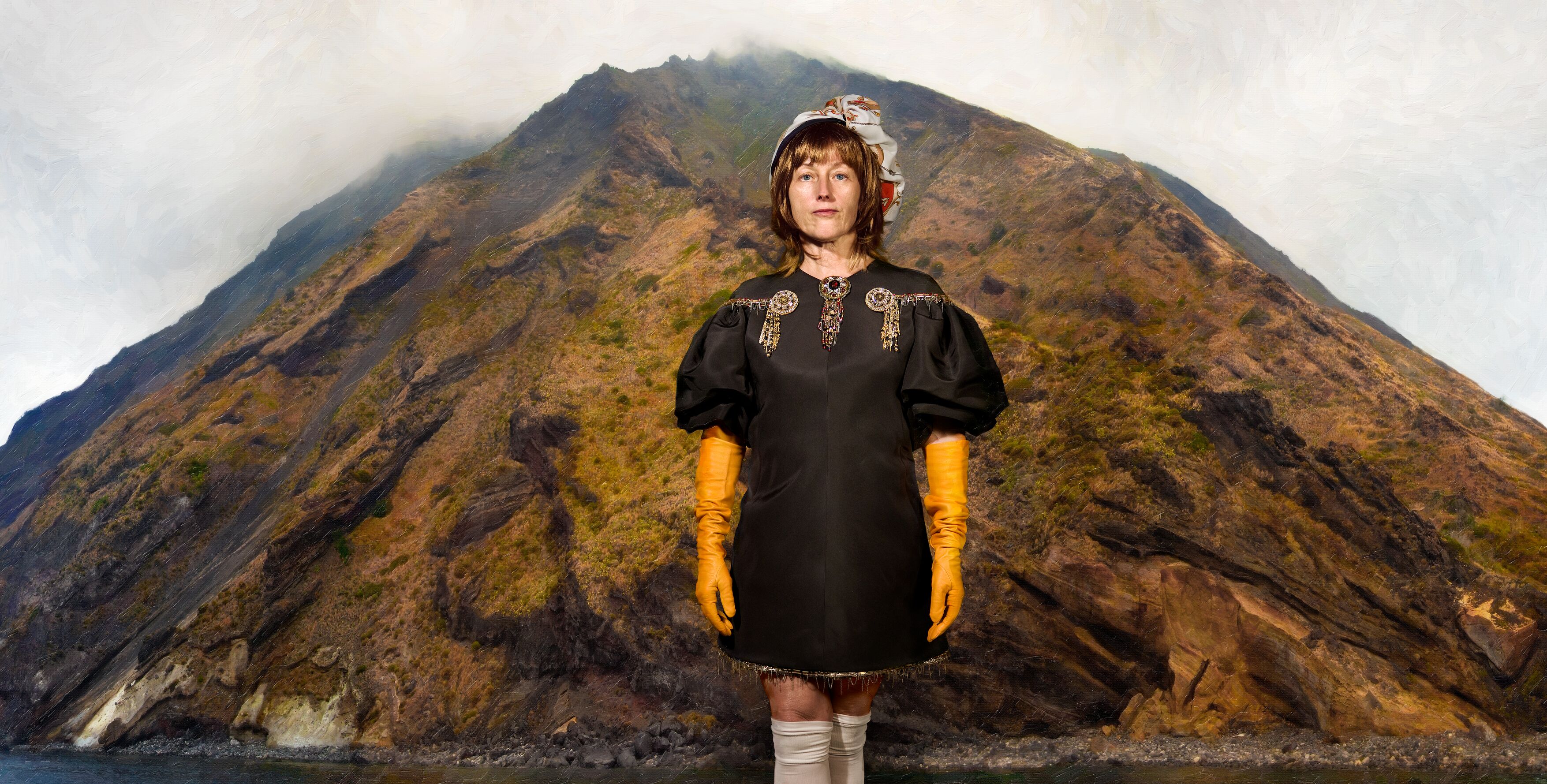 Cindy Sherman in Menorca: ‘She's decades ahead of social media and the construction of identity for the camera’
Cindy Sherman in Menorca: ‘She's decades ahead of social media and the construction of identity for the camera’‘Cindy Sherman: The Women’, its title a nod to an image-conscious 1930s Broadway hit, takes the American artist's carefully constructed, highly performative works to Hauser & Wirth Menorca
-
 What is recycling good for, asks Mika Rottenberg at Hauser & Wirth Menorca
What is recycling good for, asks Mika Rottenberg at Hauser & Wirth MenorcaUS-based artist Mika Rottenberg rethinks the possibilities of rubbish in a colourful exhibition, spanning films, drawings and eerily anthropomorphic lamps
-
 San Francisco’s controversial monument, the Vaillancourt Fountain, could be facing demolition
San Francisco’s controversial monument, the Vaillancourt Fountain, could be facing demolitionThe brutalist fountain is conspicuously absent from renders showing a redeveloped Embarcadero Plaza and people are unhappy about it, including the structure’s 95-year-old designer
-
 See the fruits of Niki de Saint Phalle and Jean Tinguely's creative and romantic union at Hauser & Wirth Somerset
See the fruits of Niki de Saint Phalle and Jean Tinguely's creative and romantic union at Hauser & Wirth SomersetAn intimate exhibition at Hauser & Wirth Somerset explores three decades of a creative partnership
-
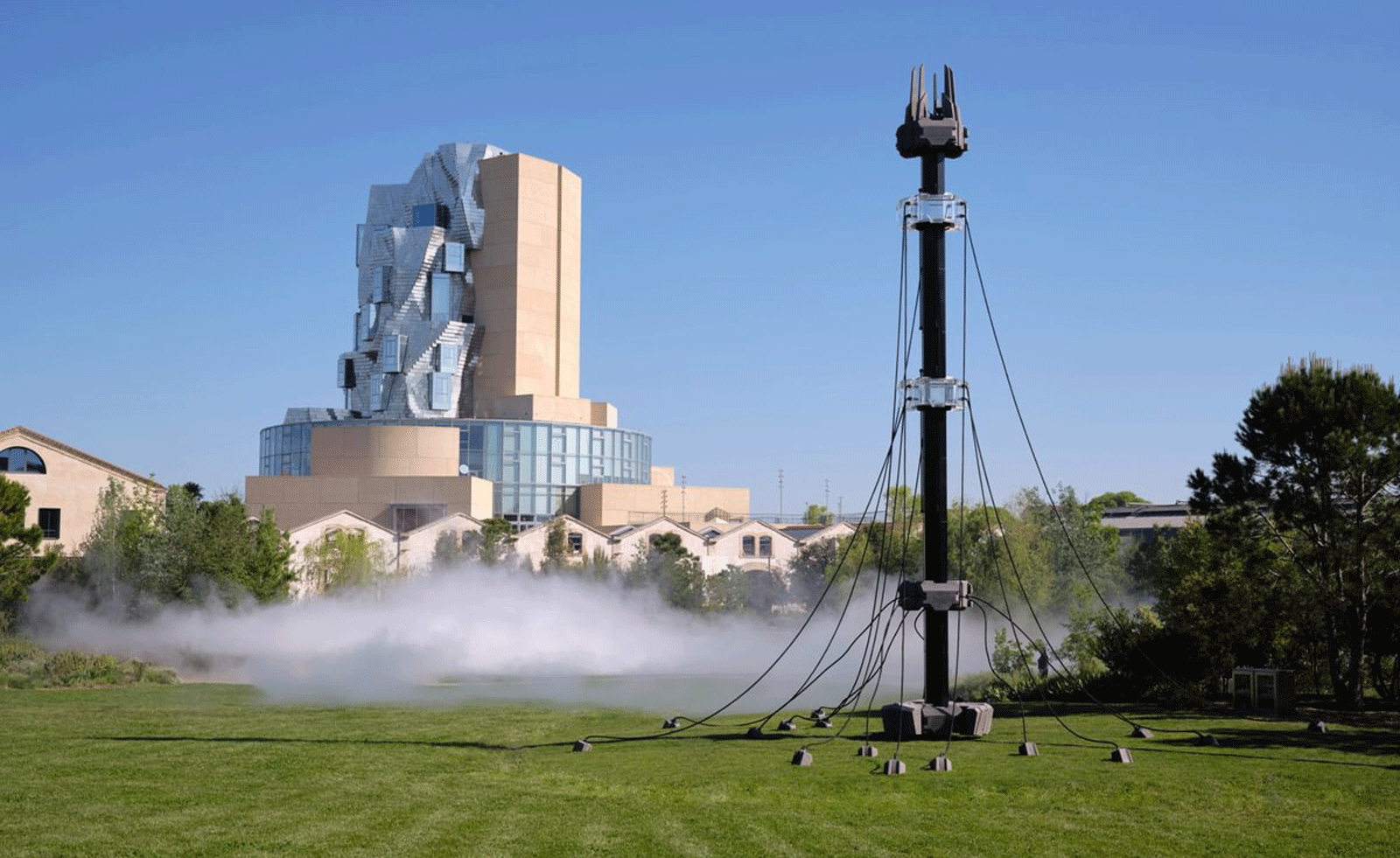 Technology, art and sculptures of fog: LUMA Arles kicks off the 2025/26 season
Technology, art and sculptures of fog: LUMA Arles kicks off the 2025/26 seasonThree different exhibitions at LUMA Arles, in France, delve into history in a celebration of all mediums; Amy Serafin went to explore